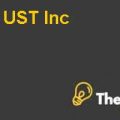Production and Cost Case Study Help
Introduction
In the complex world of economic equations and theories, the management of a large grocery store presents a fascinating case study. As the store manager, I was tasked with optimizing production and cost dynamics in response to a series of significant changes. This in-depth analysis will delve into the economic intricacies of these scenarios, incorporating relevant equations and economic theories for a comprehensive understanding.
Minimum Wage Increase
Economic Equation: Cost Minimization
The introduction of a $15 minimum wage, replacing the existing $10 minimum wage, will directly impact your labor costs. To analyze this change, we can employ the cost minimization equation:
Total Cost (TC) = Labor Cost (L) + Capital Cost (K)
Given that many current checkers earn the minimum wage and the wage increase of $5 per hour, the labor cost (L) will rise significantly. Consequently, this will affect cost-minimizing use of labor and capital.
Economic Theory: Substitutability of Labor and Capital
Economic theory posits that in the production process, labor and capital can be substituted to achieve cost efficiency. As labor costs increase, it becomes imperative to explore the point of substitutability among labor and capital. There is a need to consider shifting towards capital-intensive processes, such as the adoption of automated checkout registers, to maintain profitability while adhering to the higher minimum wage.
High Substitutability (σ > 1, σ' > 1)
If labor and capital are highly substitutable, a significant increase in the minimum wage may lead the grocery store to consider automation. The capital cost (K) of automated checkout registers could be more appealing as they become a cost-effective replacement for some labor. The store may reduce the number of checkers, relying more on capital-intensive solutions.
Low Substitutability (σ < 1, σ' < 1)
If labor and capital are less substitutable, the store may find it challenging to reduce labor costs through automation alone. In this case, the focus may shift towards optimizing the workforce, streamlining operations, and possibly absorbing some of the increased labor costs.
Specific Production Function
The form of the production function plays a critical role. If it exhibits increasing returns to scale (σ' > 1), the store may consider a more capital-intensive approach. However, if it exhibits diminishing returns (σ' < 1), a balance between labor and capital may be necessary to maintain efficiency.
Automated Checkout Registers
Economic Equation: Return on Investment (ROI)
The decision to adopt automated checkout registers should be based on a thorough analysis of ROI. The ROI equation involves comparing the benefits and costs of investment:
ROI = (Net Benefit / Cost of Investment) * 100
Factors to Determine Purchase
Initial Cost: The upfront investment required for purchasing and installing the automated registers. This cost includes the purchase price, installation expenses, and any necessary modifications to the store layout.
Labor Cost Savings: With automated registers, there is potential for significant labor cost savings. This factor involves analyzing how much can be saved by reducing the number of human cashiers or reallocating their roles to more value-added tasks.
Efficiency Gains: Automated registers can lead to increased checkout efficiency, which reduces customer wait times and potentially attracts more shoppers. Efficiency gains can be measured by assessing the reduction in checkout time and its impact on customer satisfaction and sales.
Customer Preferences: Customer preferences show a vital part in decisive the victory of automated checkout. Some shoppers prefer self-checkout, while others prefer human cashiers. Analyzing customer behavior and preferences is crucial in estimating the potential benefits of automated registers.
Economic Theory Application: The application of economic theories, such as the theory of diminishing marginal returns, helps determine the optimal number of automated registers. This theory suggests that as more registers are added, the incremental benefit decreases.
New Shopping App
Economic Equation: Marginal Productivity
The introduction of the shopping app impacts the marginal productivity of both checkers (L) and automated machines (K). The equation for marginal productivity is:
MP (L) = ΔQ / ΔL (Change in output per change in labor)
MP (K) = ΔQ / ΔK (Change in output per change in capital)...............
Production and Cost Case Study Help
This is just a sample partial case solution. Please place the order on the website to order your own originally done case solution.













